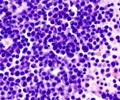Researchers at University of Michigan have identified a new reservoir for hidden HIV-infected cells that can serve as a factory for new infections.
Researchers at University of Michigan have identified a new reservoir for hidden HIV-infected cells that can serve as a factory for new infections.
The findings indicate a new target for curing the disease so that those infected with the virus might not have to rely on AIDS drugs for a lifetime."Antiviral drugs have been effective at keeping the virus at bay. However once the drug therapy is stopped, the virus comes back," Nature quoted senior author of the study Dr. Kathleen L. Collins, as saying.
In people infected with HIV (human immunodeficiency virus), the virus that causes AIDS, there's an unsolved problem with current anti-viral drugs.
Though life saving, they cannot root the virus out of the body. Infected cells can live on, undetected by the immune system, and provide the machinery for the virus to reproduce and spread.
The study has discovered that bone marrow, previously thought to be resistant to the virus, can contain latent forms of the infection.
They are not affected by current anti-HIV drug regimens.
Advertisement
"Currently people have to take anti-viral drugs for their entire life to control the infection. It would be easier to treat this disease in countries that don't have the same resources as we do with a course of therapy for a few months, or even years. But based on what we know now people have to stay on drugs for their entire life," she said.
Advertisement
While further studies are needed to demonstrate that stem cells can harbour the HIV virus, the study results confirm that HIV targets some long-lived progenitor cells, young cells that have not fully developed but mature into cells with special immune functions.
When active infection occurs, the toxic effects of the virus kill the cell even as the newly made viral particles spread the infection to new target cells.
"Our finding that HIV infects these cells has clear ramifications for HIV disease because some of these cells may be long-lived and could carry latent HIV for extended periods of time. These HIV cell reservoirs can be induced to generate new infections," she said.
The study has been published in Nature Medicine. (ANI)
Source-ANI
SAV













